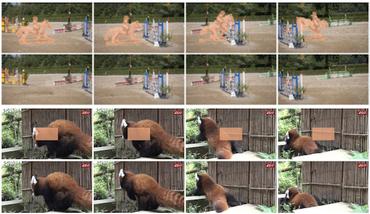Raformer: Redundancy-Aware Transformer for Video Wire Inpainting
Video Wire Inpainting (VWI) is a prominent application in video inpainting, aimed at flawlessly removing wires in films or TV series, offering significant time and labor savings compared to manual frame-by-frame removal. However, wire removal poses greater challenges due to the wires being longer and slimmer than objects typically targeted in general video inpainting tasks, and often intersecting with people and background objects irregularly, which adds complexity to the inpainting process. Recognizing the limitations posed by existing video wire datasets, which are characterized by their small size, poor quality, and limited variety of scenes, we introduce a new VWI dataset with a novel mask generation strategy, namely Wire Removal Video Dataset 2 (WRV2) and Pseudo Wire-Shaped (PWS) Masks. WRV2 dataset comprises over 4,000 videos with an average length of 80 frames, designed to facilitate the development and efficacy of inpainting models. Building upon this, our research proposes the Redundancy-Aware Transformer (Raformer) method that addresses the unique challenges of wire removal in video inpainting. Unlike conventional approaches that indiscriminately process all frame patches, Raformer employs a novel strategy to selectively bypass redundant parts, such as static background segments devoid of valuable information for inpainting. At the core of Raformer is the Redundancy-Aware Attention (RAA) module, which isolates and accentuates essential content through a coarse-grained, window-based attention mechanism. This is complemented by a Soft Feature Alignment (SFA) module, which refines these features and achieves end-to-end feature alignment. Extensive experiments on both the traditional video inpainting datasets and our proposed WRV2 dataset demonstrate that Raformer outperforms other state-of-the-art methods.
PDF Abstract

 WRV2
WRV2
 DAVIS
DAVIS
 Perceptual Similarity
Perceptual Similarity
 YouTube-VOS 2018
YouTube-VOS 2018